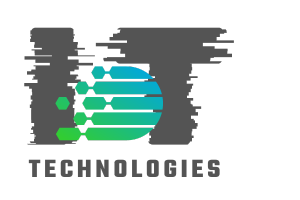
How to automate solar energy systems for enhanced efficiency?
Share
The world is increasingly shifting towards renewable energy sources, and solar energy stands at the forefront of this transition. As tech professionals and enthusiasts, understanding how to automate solar energy systems can significantly enhance energy efficiency and sustainability. In this article, we will explore the steps and technologies involved in automating solar energy systems, ensuring that your solar setup operates at its peak performance.

Why Automate Solar Energy Systems?
Before diving into the technicalities, it's crucial to understand the benefits of automation in solar energy systems. Automation not only optimizes the energy output but also ensures that the system runs with minimal human intervention, reducing operational costs and increasing reliability.
Automated systems can monitor weather patterns, adjust solar panel angles, and manage energy storage, ensuring that you harness the maximum potential of the sun. By integrating smart home technologies, users can further enhance energy management, reducing their carbon footprint and contributing to a greener planet. To delve deeper into the broader impacts of automation, visit 15 Eco Innovations.
Key Components of an Automated Solar System
1. Smart Inverters
A critical component of any automated solar energy system is the smart inverter. Unlike traditional inverters, smart inverters come equipped with advanced features that allow them to communicate with the grid and manage energy loads efficiently. They can adjust the power output and manage battery storage, ensuring your system runs optimally at all times.
2. IoT Devices and Sensors
Internet of Things (IoT) devices and sensors play a pivotal role in the automation of solar energy systems. These devices collect data on various parameters such as sunlight intensity, temperature, and battery status. This data is then analyzed to make real-time adjustments, optimizing energy production and consumption. For further insights on IoT's role in solar efficiency, explore IoT and Solar Panel Efficiency.
3. Energy Management Systems
An energy management system (EMS) is essential for the automation of solar setups. EMS integrates with smart inverters and IoT devices to provide a comprehensive overview of energy production and consumption. It allows users to set preferences for energy usage, ensuring that power is allocated efficiently. By automating energy management, users can reduce waste and save on electricity bills.
Steps to Automate Your Solar Energy System
Automating a solar energy system involves several steps, each crucial to ensuring optimal performance and efficiency.
1. Assess Your Current Setup
Begin by evaluating your current solar system. Identify areas that can benefit from automation, such as energy storage, panel orientation, and load management. Check the compatibility of your existing equipment with smart technology.
2. Choose the Right Automation Tools
Select automation tools that align with your energy needs and goals. Consider investing in smart inverters, IoT sensors, and a robust energy management system. Ensure that these tools are compatible with each other and can be integrated seamlessly.
3. Install and Configure
Once you've selected the appropriate tools, proceed with the installation. Follow manufacturer guidelines and, if necessary, consult with a professional to ensure everything is set up correctly. Configure the system to automate tasks such as energy monitoring, solar panel adjustments, and battery management.
4. Monitor and Optimize
After installation, continuously monitor the system's performance. Use the data collected by IoT devices to identify areas for further optimization. Regular updates and maintenance will ensure that the system operates at peak efficiency. Learn more about optimizing home energy systems by visiting Smart Home Technology for Renewable Energy.
Future of Automated Solar Energy Systems
The future of solar energy systems lies in further integration with smart home technologies and artificial intelligence (AI). As AI becomes more advanced, it will play a critical role in predicting energy consumption patterns and optimizing energy distribution. The possibilities are endless, and the potential for efficiency gains is immense.
For those interested in exploring the intersection of automation and sustainability, check out Home Automation and the Environment.
Conclusion
Automating solar energy systems is a game-changer for tech professionals and enthusiasts looking to optimize their energy setups. By incorporating smart inverters, IoT devices, and energy management systems, users can significantly enhance the efficiency and reliability of their solar installations. As technology advances, the opportunities for further automation and efficiency gains will only grow, paving the way for a sustainable future.

FAQ
What are the benefits of automating solar energy systems?
Automating solar energy systems increases efficiency, reduces operational costs, and improves reliability. It allows for real-time adjustments and better energy management, leading to significant savings and a reduced carbon footprint.
Can existing solar systems be automated?
Yes, existing solar systems can often be retrofitted with automation tools like smart inverters and IoT sensors. However, it's essential to assess compatibility and consult with professionals to ensure a seamless integration.
What role does IoT play in solar automation?
IoT devices collect and analyze data from the solar system, enabling real-time adjustments to optimize energy production and consumption. They play a crucial role in monitoring system performance and ensuring efficient energy management.
